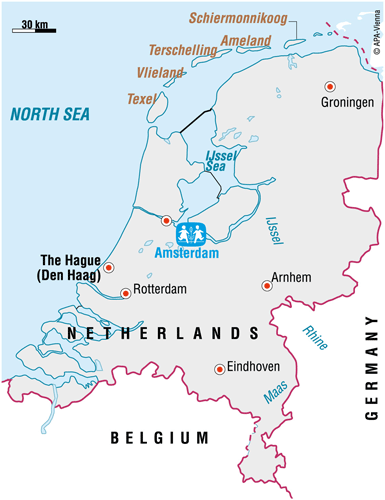
SOS Children's Villages has been operating in the Netherlands since the mid-1960s. Although the organisation does not operate any villages in the Netherlands, it plays a vital role in raising funds for many programmes in countries around the world.
For just $36/month you can sponsor a child and help provide an orphaned or abandoned child with:
- A safe and nurturing home
- A loving SOS mother
- Quality education
- Healthcare
- Nutritious food
- Clothing and toys
- All the things necessary for a bright future
SOS Children's Villages in the Netherlands
SOS Children's Villages, known as "SOS Kinderdorpen" in the Netherlands, has been very active in raising funds for the organisation's international work.
In 1999, it started a partnership with the Royal Haarlem Football Club and in 2005 it was the official charity partner of the FIFA youth world cup, which took place in the Netherlands. In 2006 the association signed a contract with the NUMICO company, which has its headquarters in Amsterdam. SOS Children’s Villages has benefited not only financially but also through the opportunity to work in collaboration with the national NUMICO associations.

Some facts about the Netherlands
The Kingdom of the Netherlands is a constitutional monarchy in Western Europe. It borders the North Sea in the north and the west, Germany in the east, and Belgium in the south. The country covers an area of 33,883 km² and the population is 16.8 million (July 2011 est.), which makes the Netherlands one of the most densely populated countries in the world. The capital and largest city is Amsterdam with about one million inhabitants. The government is based in The Hague, which has around 630,000 residents.
The Dutch majority accounts for 81 per cent of the population, five per cent of people originate from other European Union countries and the rest come mainly from Indonesia, Suriname, Morocco and the Caribbean. The Netherlands is an active member of many international organisations such as the North Atlantic Treaty Organisation, the Organisation for Economic Cooperation and Development, the World Trade Organisation and of the European Union; the euro has been the currency since January 2002.
A high standard of living for a country with a stable economy
The Netherlands has traditionally had a stable and thriving economy, based mainly on the income generated by the service sector but also from sectors like industry and agriculture, accounting for 25 and 2.6 per cent of gross domestic product (GDP), respectively.
However, the global financial crisis of 2008-2010 affected the economy badly: in 2009, GDP fell by 3.9 per cent and exports decreased by nearly a quarter. But by 2010, there were signs that the economy was improving as GDP rose by 1.7 per cent. The unemployment rate for 2010 was 4.1 per cent, one of the lowest within the European Union.
The people of the Netherlands enjoy a high standard of living, with access to good health care, a supportive social welfare system and an excellent educational system. The Netherlands has a high life expectancy rate, with the average woman living to the age of 79 and the average man living to 78 years of age. There are, however, regional differences in the standard of living; people of the south and west tend to have higher incomes due to the nature of employment there.
In spite of this economic and social well-being, it is estimated that 6.2 per cent of the population lives in poverty. About two per cent of families cannot afford a daily hot meal with fish, meat or poultry and nearly six in ten households cannot afford a week-long holiday once a year.
Situation of the children in the Netherlands
There are around 3.5 million children under the age of 18 in the Netherlands. Children in the Netherlands are materially well off and have access to a good education and health care system. A study carried out in 2009 found that the happiest children in Europe lived in the Netherlands.
In 2009, the Programme for International Student Assessment (PISA) placed the education system in the Netherlands as the ninth best among the countries included in the study. All children have to attend full-time school between the ages of four and 16. After the age of 16, there is partial compulsory education, which means that young people have to attend some schooling for at least two days of the week.
However, in spite of the overall favourable conditions it is estimated that about 311,000 children live below the poverty line (2009 figures). More worryingly, this number has increased in recent years. Children who are most at risk are those who live in single-parent families, and about a third of these children have a non-western background.
